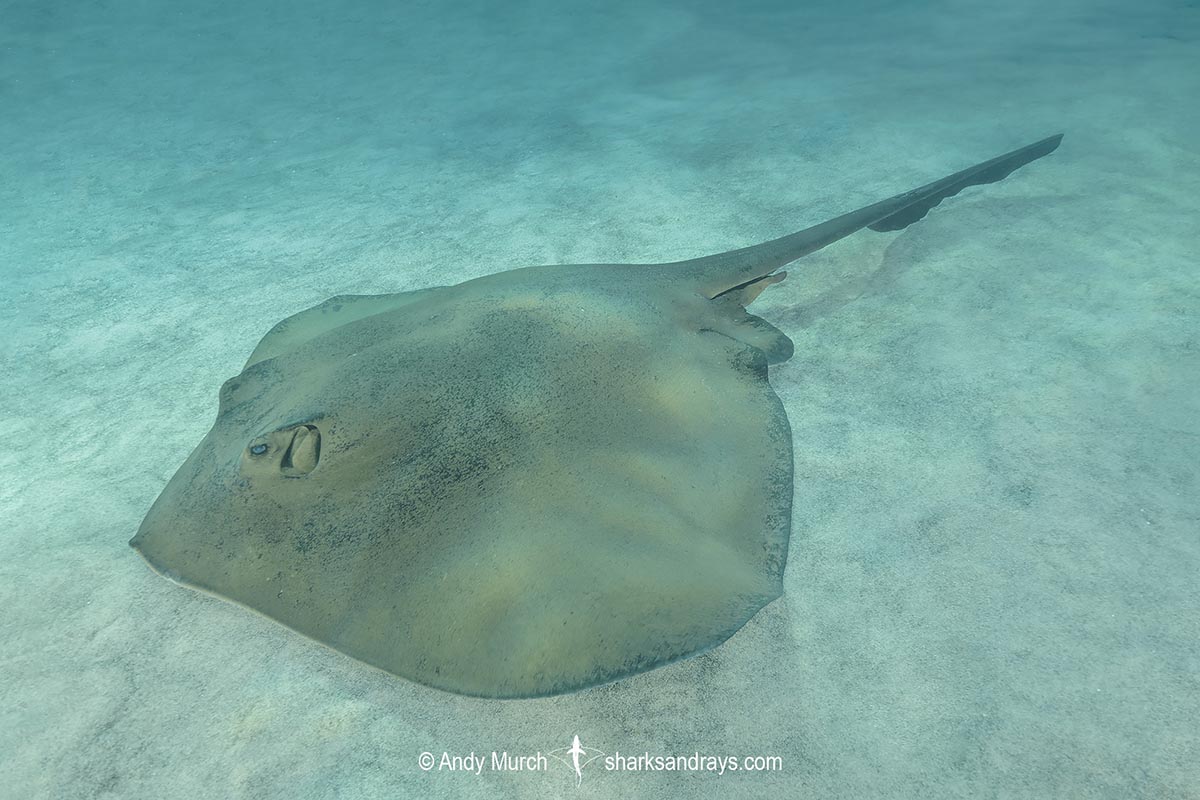Common names
Cowtail Stingray.
Binomial
Pastinachus sephen.
Synonyms
Dasyatis gruveli, Dasyatis sephen, Dasybatus gruveli, Dasybatus sephen, Hypolophus sephen, Pastinachus gruveli, Raia sancur, Raja sancur, Raja sephen, Trigon forskalii, Trygon sephen.
Identification
A medium-sized stingray with a kite-shaped disc that is slightly wider than long; disc width approximately 1.2-1.3 x length. Snout short and obtusely angular with a small protruding tip. Anterior margins of disc almost straight or mildly convex. Pectoral fin apices angular. Pelvic fins large with narrowly rounded apices.
Eyes small. Snout length 1.6-1.8 x combined eye and spiracle length. Mouth small and arched, with 5 oral papillae; 3 central papillae close together. Jaws bulbous. Nasal curtain skirt-shaped with a central split (bi-lobed). Nostrils thin, positioned obliquely.
Wide band of flattened denticles on central disc in adults. Up to 3 small seed-shaped thorns on midline at shoulder; often absent in adults or merged into denticle band. Tail fairly short, tapering gently to tail sting, then filamentous to tip. Tail length (when intact) usually less than 2x disc width. Dorsal finfold absent. Ventral finfold long and very deep; depth beyond caudal sting 3.5-4.8 x tail height. Ventral fold base length 0.77-0.98 x disc width. One caudal sting usually present; set well back on tail.
Colour
Dorsum yellow-brown to grey. Ventrum white, often with a thin dark margin. Tail beyond caudal sting usually dark. Ventral finfold bluish or black.
Size
Maximum disc width at least 89cm. Disc width at birth unknown.

Conservation Status
NEAR THREATENED
The Cowtail Stingray is caught (and in some areas retained) in trawl, gillnet and longline fisheries. Heavy inshore fishing pressure which are expected to increase in the region, have resulted in a downward trend in the population, but an accurate assessment is hampered by confusion with other pastinachus species.
In the Arabian/Persian Gulf, cowtail rays are generally released, but their tails are often amputated. Habitat loss and modification of coastal habitats in the Gulf are also a concern for this and other coastal species.
Habitat
Tropical seas. On soft substrates, often adjacent to reefs. From shallow estuaries to at least 60m.
Distribution
Northwest Indian Ocean, Arabian Gulf, and Red Sea.
Reproduction
Matrotrophic aplacental viviparity. Litter size unknown.
Diet
Diet unknown.
Behavior
Sedentary. Behavior poorly known.
Reaction to divers
Shy but approachable if accustomed to divers.
Diving logistics
The range of the cowtail stingray is unclear due to confusion with other species in the Pastinachus genus but the holotype was described from the Red Sea. Dive sites in Egypt are probably the most likely place to find this species.
What’s new
View our full list of updates
Similar species
Broad Cowtail Stingray Distinguishable by 4 midline thorns (rather than 3), somewhat darker ventral finfold, and shorter tail filament.

